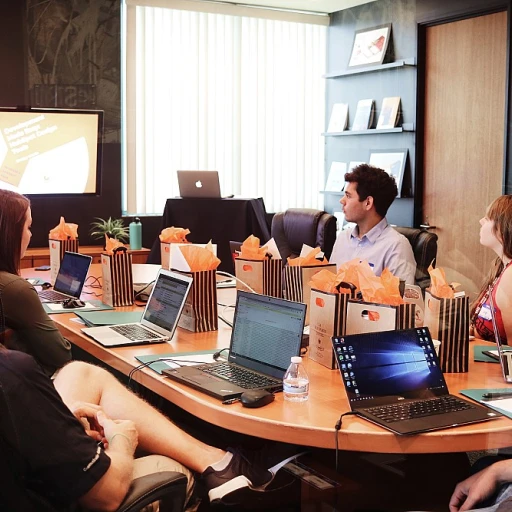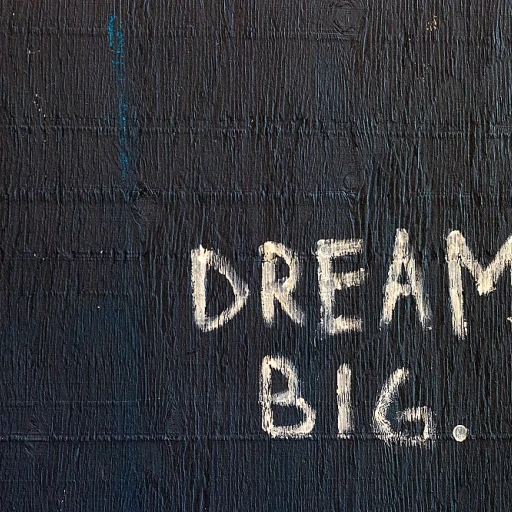
Defining Skills and Abilities
Clarifying the Foundation: Distinguishing Skills from Abilities
In the context of workplace development and reskilling, a clear understanding of the difference between skills and abilities is crucial. While these terms are often used interchangeably, they represent distinct concepts that require individual consideration for effective employee training and hiring strategies.
Skills generally refer to learned behaviors or actions that employees can develop through practice and training. They encompass both hard skills, such as technical knowledge, and soft skills, such as communication and teamwork. These are specific skills that empower an employee to perform specific tasks or functions in a job.
Unlike skills, abilities are inherent qualities, often influenced by an individual's innate talent or natural aptitude. These are not easily taught, as they relate to the overall capability of a person to learn, adapt, and apply knowledge. For instance, a person's ability to think critically or solve problems creatively falls into this category.
The difference between identifying and cultivating skills versus abilities can significantly impact the outcome of a reskilling initiative. While skills can be taught and expanded through skills based learning programs, abilities may require a different approach, focusing on enhancing what is inherently present within the employee.
Understanding the interplay between skills and abilities helps in crafting a more effective talent development strategy, distinguishing what aspects of an employee's performance can be improved through conventional training versus those that may need a more nuanced approach.
For a deeper exploration into strategies for managing and developing these essential workplace competencies, consider reading on mastering the art of skills management.
The Role of Skills in Reskilling
The Importance of Skills in the Reskilling Journey
In the dynamic landscape of the modern workplace, skills hold a pivotal role in the reskilling process. With constant advancements in technology and evolving industry demands, employees must continuously develop skills to stay relevant and competitive. This not only enhances job performance but also boosts employee engagement and satisfaction. The difference between skills and abilities becomes particularly significant in reskilling. Skills are learned capabilities that are honed through training and experience. Specific skills, such as coding or data analysis, can be directly applied to a job and are often a focal point in workplace training programs. Meanwhile, abilities are more innate and involve the capacity to perform certain tasks, which are crucial in adapting to new roles. Differences in Skill Types Understanding the distinctions between skill types can help employees better navigate their career paths:- Hard Skills: Technical skills or knowledge skills that are specific and easily quantifiable, like proficiency in software programs.
- Soft Skills: Interpersonal skills that enhance how employees work and interact with colleagues, such as communication and teamwork.
- Life Skills: Essential skills for all areas of life, impacting personal and professional development.
Understanding Abilities in the Context of Reskilling
Abilities: The Underlying Drivers of Workforce Potential
In the context of reskilling, understanding abilities plays a pivotal role in shaping an employee's journey towards career growth and development. Abilities refer to innate talents or attributes that individuals possess, and these can greatly influence how one approaches learning and implements new skills. While skills are acquired through training and repetition, abilities are more intrinsic, rooted in an individual's natural proclivities and potential. Difference between abilities and skills lies in their core nature: while skills are teachable and specific, such as proficiency in a particular software or technique, abilities serve as the underlying drivers that support the learning and mastery of these skills. For instance, critical thinking and problem-solving are abilities that can enhance an employee's capability to develop skills in any technical domain. An employee with a strong ability in creativity may more easily adapt to roles requiring innovative solutions, thereby enhancing their performance in skills-based tasks. On the other hand, an individual with keen attention to detail might excel in positions where precision is critical, regardless of the specific skills involved. The interplay between skills and abilities is significant because it often dictates how effectively employees can transition from one job role to another, particularly during the reskilling process. Those looking to reskill might focus on honing both specific skills and the abilities that complement and enhance them. For more insight into how employees can master essential skills for a sustainable career, consider exploring mastering essential skills for a sustainable career. Remember, nurturing abilities is just as crucial as developing skills. Encouraging employees to harness their natural abilities can lead to enhanced employee engagement and efficient learning experiences in the workplace. The alignment between skills and abilities not just aligns with one's current job requirements but also prepares them for future roles, making this understanding an integral component of reskilling strategies.Interplay Between Skills and Abilities
Interconnections Within the Reskilling Process
In the reskilling arena, acknowledging the interplay between skills and abilities is imperative, as it shapes how we approach training and development. When assessing an employee's potential, it's essential to recognize the distinct yet interconnected nature of skills and abilities. Skills are often the tangible process-oriented proficiencies that individuals can learn, develop, and refine through experience and targeted training. These include both hard skills—like data analysis or programming—and soft skills, such as communication and teamwork. Skills provide the framework for employees to perform their job roles effectively within the workplace setting. They also help teams thrive by ensuring each member can contribute specific skills to collective objectives. On the other hand, abilities refer to more innate talents that might not be taught but can be enhanced over time. They are the underlying qualities that support skill development and are crucial for skill-based tasks. For instance, an individual's aptitude for problem-solving bolsters their ability to acquire and apply specific skills in complex situations. Understanding the differences between these components allows organizations to tailor their reskilling initiatives. This awareness facilitates the creation of comprehensive training programs that not only implement skills-based learning but also emphasize the need to cultivate inherent abilities. It's about striking a balance, ensuring that employees are equipped with both the necessary knowledge skills and the ability to adapt to new challenges. However, distinguishing between skills and abilities can be challenging. Often, the line blurs, leaving organizations to carefully evaluate how abilities influence skill development in various job contexts. As employees work towards advancement, both elements contribute significantly to their capacity to grow and succeed within the workplace. Organizations must also consider employee engagement strategies that encourage individuals to leverage both their skills and abilities. By fostering an environment that prioritizes ongoing learning and development, teams can maximize their collective potential, driving forward organizational growth. Employers focused on effective reskilling must confront these challenges head-on, continually refining how they identify, nurture, and utilize the diverse mix of skills and abilities in their workforce.Challenges in Differentiating Skills and Abilities
Complexities in Distinguishing Skills and Abilities
In the dynamic landscape of the workplace, differentiating between skills and abilities can be challenging for both employees and employers. While skills are often seen as specific competencies acquired through training and experience, abilities are more innate talents that can be honed over time. This distinction, however, is not always clear-cut.
One of the primary challenges lies in the overlap between skills and abilities. For instance, an employee might possess the ability to communicate effectively, a talent that can be developed into a skill through practice and training. This interplay often blurs the lines, making it difficult to categorize certain competencies strictly as skills or abilities.
Moreover, the difference between hard skills and soft skills adds another layer of complexity. Hard skills, like technical knowledge or proficiency in a specific software, are easier to quantify and measure. In contrast, soft skills, such as teamwork and problem-solving, are more subjective and closely tied to an individual's inherent abilities.
Another challenge is the evolving nature of job roles and the skills required to perform them. As the workplace continues to change, the specific skills and abilities needed can shift, requiring employees to continuously develop and adapt. This constant evolution can make it difficult to pinpoint which skills and abilities are most critical at any given time.
For employers, distinguishing between skills and abilities is crucial for effective hiring and employee development. Understanding these differences can lead to better employee engagement and more targeted training programs. However, without a clear framework, organizations may struggle to identify the right balance between nurturing innate abilities and developing specific skills.
Ultimately, recognizing the nuances between skills and abilities is essential for both personal and professional growth. By acknowledging these challenges, individuals and teams can better navigate the complexities of the modern workplace and foster a more adaptable and skilled workforce.
Practical Tips for Leveraging Skills and Abilities
Nurturing Skills and Abilities for Professional Growth
Practical strategies for fostering both skills and abilities in reskilling can significantly enhance an employee's impact in the workplace. Knowing the difference between skills and abilities sets a solid foundation for targeted development initiatives. Here's how you can effectively leverage these elements:
- Identify Specific Skills: Begin by pinpointing the specific skills that align with your job description. These skills often form the backbone of your role and are critical for effective performance. Leveraging these specific skills can optimize role-based efficiencies.
- Embrace Lifelong Learning: The process of developing skills should be seen as a continuous journey. It requires consistent training and acquiring new knowledge to remain relevant in a dynamic workplace.
- Enhance Soft Skills: While technical skills are key, soft skills like communication and empathy play a crucial role in team collaboration. Developing these ensures better employee engagement and workplace harmony.
- Incorporate Experience: Real-world experience provides invaluable learning not covered in training sessions. Engaging in diverse projects allows employees to harness their natural abilities and refine their talent.
- Foster a Supportive Work Environment: Encourage a culture where employees feel motivated to share knowledge. Creating a support system amplifies opportunities for collaborative ability skill development.
- Regular Assessments: Conducting regular skills assessments will help in identifying gaps between current capabilities and required skills. This can be a vital step in curating targeted skill-based training programs.
- Feedback and Mentorship: Constructive feedback and guidance from mentors can be instrumental in bridging the gap between knowledge and execution. It spurs personal development and leverages existing talent.
By strategically intertwining skills with abilities, companies can nurture a workforce capable of tackling evolving challenges. This approach not only sharpens employees' expertise but also assures a thriving professional environment.













